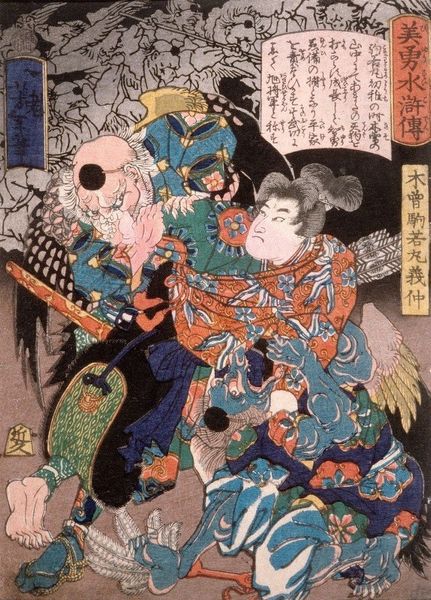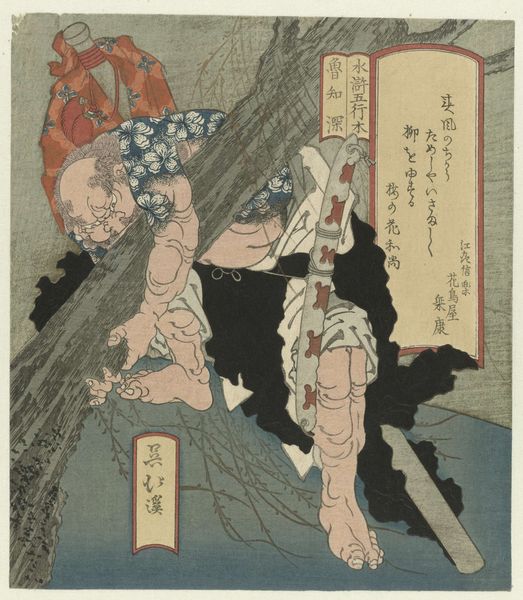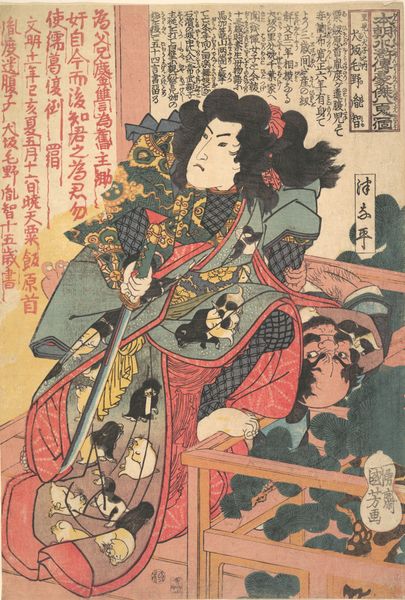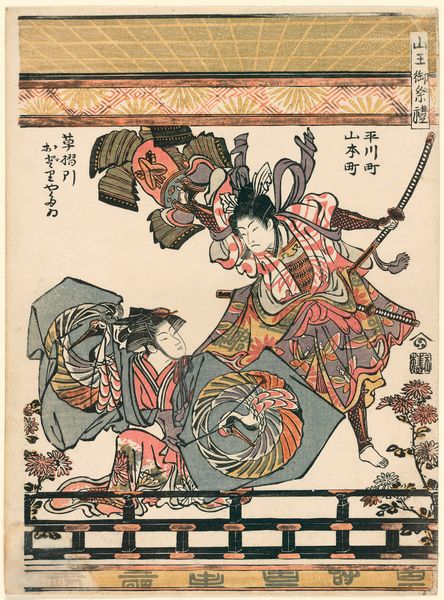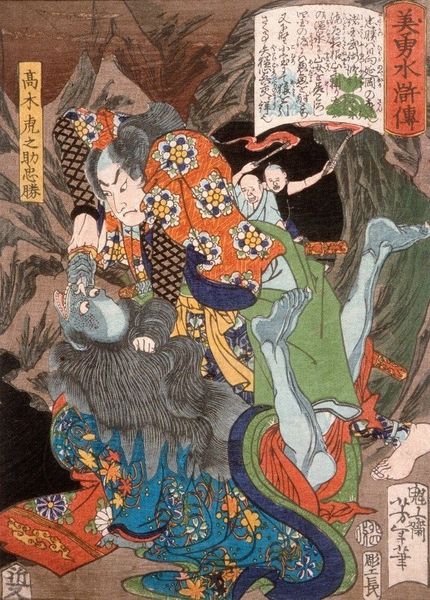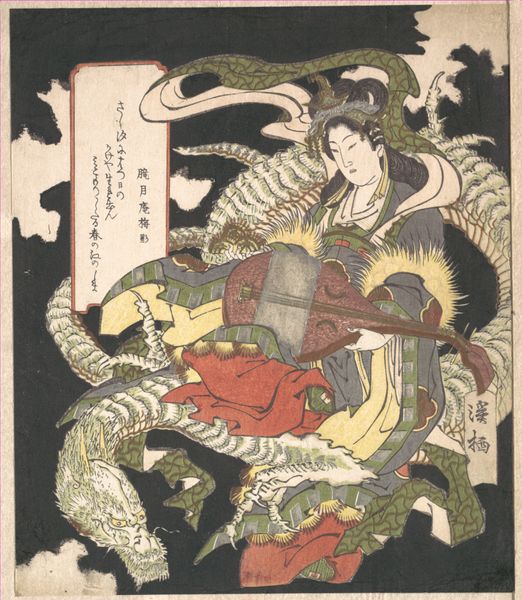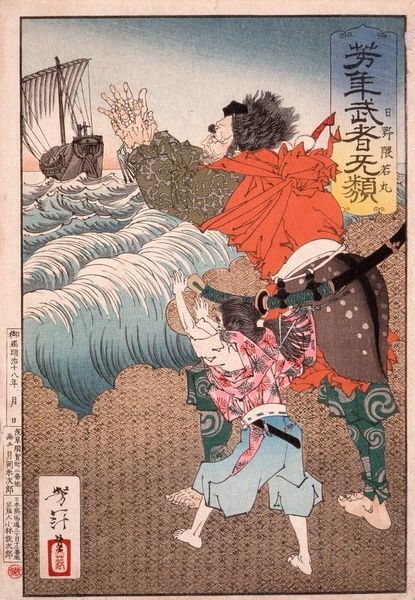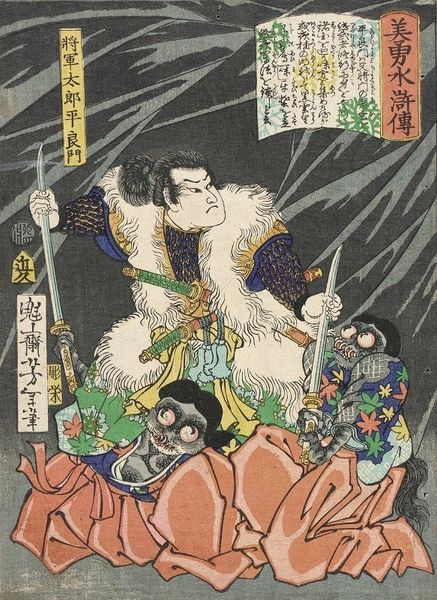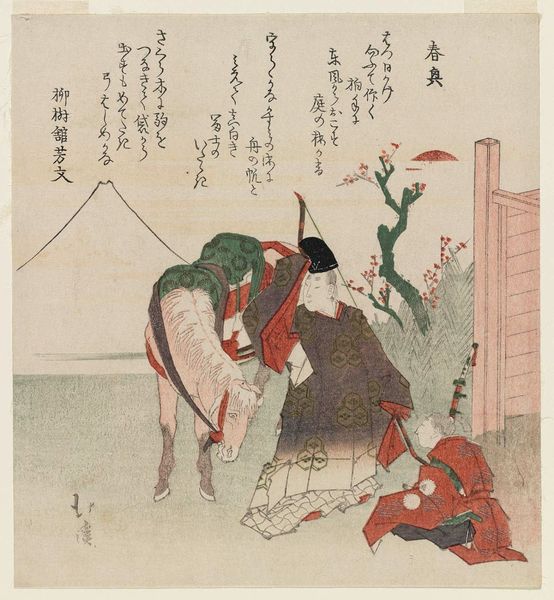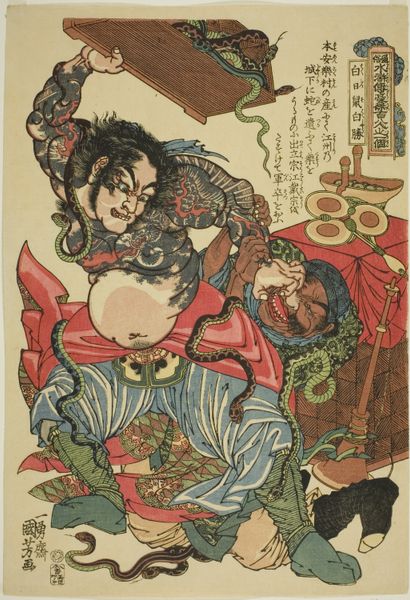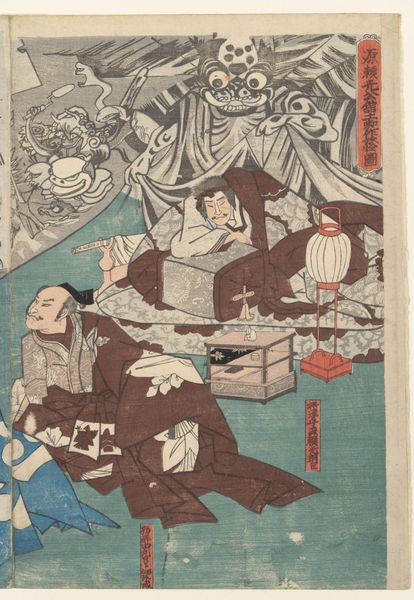
print, woodblock-print
#
narrative-art
# print
#
asian-art
#
ukiyo-e
#
figuration
#
woodblock-print
#
history-painting
Copyright: Public domain
Editor: Here we have a woodblock print attributed to Tsukioka Yoshitoshi, titled “Grab Tengu Nose”. It's dynamic, energetic even, with multiple figures locked in what seems like a fierce struggle. I'm especially drawn to the expressions; there’s a mix of pain and determination. What catches your eye, and how would you interpret the cultural symbolism at play? Curator: The title gives us a hint, doesn't it? Tengu are, of course, those fascinating figures from Japanese folklore, often depicted with long noses and associated with mountains and martial prowess. Yoshitoshi isn’t simply showing a fight; he's tapping into a deep well of cultural memory. The struggle against the Tengu becomes a metaphor, perhaps, for overcoming inner demons or mastering oneself. The imagery around them carries significant weight. Consider how this echoes larger cultural narratives of heroes battling mythical beings, where triumph means more than just physical victory. Do you see how the artist positions the human figure? Editor: He's almost wrestling with the tengu, close enough to grab his nose. The textures also stand out to me -- the softness of the tengu’s hair against the sharp lines of the warrior's clothing. Curator: Exactly. That interplay is crucial. The warrior's clothing, adorned with symbols, reflects social standing and clan affiliation, and even tells a story of its own. Yoshitoshi isn't just an artist; he’s a storyteller working with symbols laden with cultural weight. What message is being communicated? Editor: So it is history mixed with legends to create an allegory for struggle? I suppose the way figures are framed and colored has a deeper connection with shared beliefs about this historical-mythical time period, too. Fascinating. Curator: Indeed. And it's these complex layers of meaning that make ukiyo-e prints like this so enduring. Looking at the artist's work this way, what do you now consider significant about this work? Editor: Now, I notice much more symbolism with historical background as an integral ingredient of the print, transforming what looks like a moment into the narrative and values of its culture. Thanks, this has completely shifted my understanding of narrative!
Comments
No comments
Be the first to comment and join the conversation on the ultimate creative platform.
